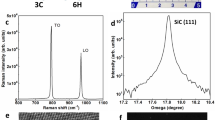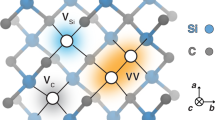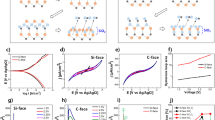Abstract
LAYERS and “whiskers” of silicon carbide have been made in several investigations1 by the thermal decomposition of the vapour of trichloromethylsilane (CH3SiCl3). The experimental conditions used have varied widely, however, and there has been little information about what controls the morphology of the silicon carbide produced by this method. In recent work it has been shown that the form of deposit obtained is determined mainly by the flux of the vapour species. Layers are formed above a critical flux, while filamentary deposits are formed below it.
This is a preview of subscription content, access via your institution
Access options
Subscribe to this journal
Receive 51 print issues and online access
$199.00 per year
only $3.90 per issue
Buy this article
- Purchase on SpringerLink
- Instant access to full article PDF
Prices may be subject to local taxes which are calculated during checkout
Similar content being viewed by others
References
For example, see: Popper, P., and Mohyuddin, I., in Special Ceramics 1964, edit. by Popper, P., 45 (Academic Press, London and New York, 1965). Kirchner, H. P., and Knoll, P., J. Amer. Ceram. Soc., 46 (6), 299 (1963).
Jenkins, A. C., and Chambers, G. F., Industr. Eng. Chem., 46, 2367 (1954).
Author information
Authors and Affiliations
Rights and permissions
About this article
Cite this article
NOONE, M., ROBERTS, J. Pyrolytic Deposits of Silicon Carbide. Nature 212, 71 (1966). https://doi.org/10.1038/212071a0
Issue date:
DOI: https://doi.org/10.1038/212071a0
This article is cited by
-
Thermal dissociation of iron carbonyls during growth of iron whiskers
Russian Chemical Bulletin (2004)
-
Tensile strength and morphological investigation of SiC-coated carbon fibers
Korean Journal of Chemical Engineering (1995)
-
The fabrication of ceramic-coated carbon fibre duplex elements
Journal of Materials Science (1974)



